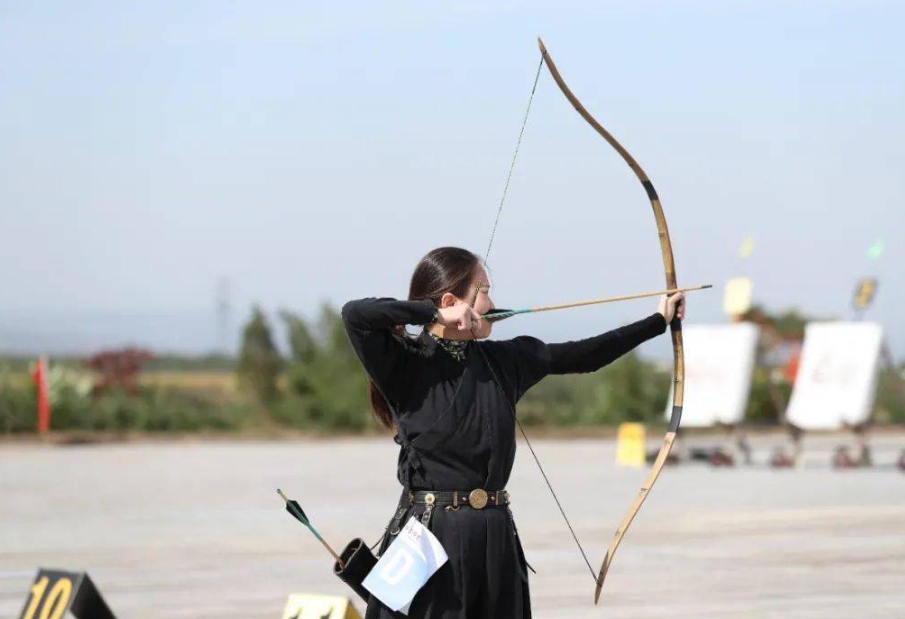Release time:2025-07-03 16:43:47Clicks:author:SPG ArcheryMain categories:Bows, Arrows, Archery Accessories

Xia, Shang and Western Zhou were the slave society periods in China. Generally speaking, it refers to the period from about 2070 BC to 771 BC, which is roughly the period of Xia (about 2070-1600 BC), Shang (about 1600-1046 BC) and Western Zhou (about 1046-771 BC) in my country. Slave society is an important period in the history of human social development. In a sense, without the development of slave economy, there would be no division of labor in later society. Therefore, Engels said: "Only slavery made a larger-scale division of labor between agriculture and industry possible, thus creating conditions for the prosperity of ancient culture, that is, Greek culture." (Volume 20 of "Collected Works of Marx and Engels", People's Publishing House, 1971, page 196) In China, the economic development of slave society has gradually formed a relatively mature and complete system for archery, and its characteristics of serving the interests of the ruling class have become increasingly obvious. For example, in the education and training of slave owners' children, archery is an indispensable content (one of the "Six Arts"); in social etiquette education, archery is a universal social norm and an important carrier; especially in the Western Zhou Dynasty, "archery ceremony games" in the sense of modern sports have appeared.
1. Popularization and training of archery in military activities
Originally as a production and life skill, archery activities have been continuously revealed in military peace with the frequent changes of dynasties and frequent wars after humans entered the human society. Especially in the era of cold weapons, archery is an important weapon to achieve the goal of killing far away, and thus it has been widely valued by society.
Popularization of archery in military activities
According to archaeological discoveries in my country, a large number of bronze arrowheads have been found in the Erlitou cultural site representing the Xia Dynasty culture ("Brief Report on the Excavation of Erlitou Site in Yanshi, Henan", "Archaeology" No. 5, 1965). In the Shang and Western Zhou dynasties, due to the widespread use of bronze, its bronze arrowheads were found in many archaeological cultural sites. For example, a large number of bronze arrowheads were also found in the Shang Dynasty ruins in Zhengzhou ("Excavation of the Shang Dynasty Ruins in Zhengzhou", "Journal of Archaeology", No. 1, 1957). Bronze arrowheads cannot be recovered after being shot, which should be the reason why a large number of bronze arrowheads were found in cultural relics in later generations. Such a large consumption and high cost of bronze arrowheads could never be used only for production activities such as hunting, but should also meet the needs of military struggle at that time. Therefore, the appearance of a large number of bronze arrowheads not only shows that China had entered the Qinggang era of developed civilization during this period, but also shows that archery activities have been widely used in the field of military struggle.
In the Shang Dynasty, there were even horseback archery activities. In the third excavation of Yinxu, archaeologists found a man, a horse, and a dog buried alive in a pit, and buried with a dagger, a knife, a bow and arrow, and a "steel" for imperial horses. On the horse's head, there were jade, stone, and clam ornaments originally tied to the reins, as well as a "U"-shaped imperial horse bit. Combined with the burial method of Kido and the fact that people, horses, and bows and arrows were buried together, it can be inferred that the tomb owner should be a horse archer. Therefore, "Science and Technology Chapter of Research on Oracle Inscriptions of Yinxu" pointed out: "There are relics of horse archery in the excavation of Yinxu, and there are examples of "horse archery" in the oracle inscriptions. Therefore, it can be said with certainty that single riding and horse archery were already popular in the Yin Dynasty."
Archery training in military activities
Probably in the Western Zhou Dynasty, the role of archery in military struggle became more prominent, and archery training in the army became more frequent. Therefore, a large amount of valuable information about the archery training activities of the Western Zhou army was preserved in the bronze inscriptions. For example, "The Book of Rites·Monthly Orders" states: In the first month of winter, "the emperor ordered the generals to talk about military affairs, practice archery, charioteering, and wrestling." Under the social conditions at that time, even the Zhou emperor had to appear on the training ground frequently to train archery with the soldiers. As the Book of Rites·Book of Music says: "Disperse the army and shoot in the suburbs, shoot the raccoon head on the left and the Luo Yu on the right." In the Western Zhou Dynasty, the "Grand Minister of Education", as a high-ranking official of the regime, even had to regularly summon the army for "shooting and driving" competitions and training.
In addition to the army's regular archery training, the Western Zhou Dynasty also required military training for the general public, among which archery was one of the main subjects of military training. For example, the local units in the rural areas of the Western Zhou Dynasty were organized according to the military organization. The people were required to work in peacetime, participate in training during the slack season, and go to the battlefield to become soldiers during wartime. Since bows and arrows are easy to make and the skills are easy to master, archery training among the people is also the most common. At the same time, when a son is born in a family, a bow and arrow will be hung in front of the door, implying that the boy will be accompanied by archery throughout his life, emphasizing that the boy should focus on defending his country when he grows up.